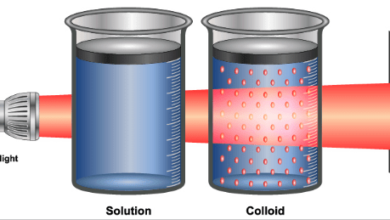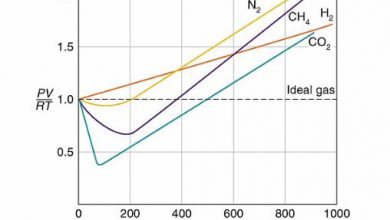Filtration Process Diagram Examples and Methods
The process of filtration is a separation of substances in the laboratory and is used to insoluble solid particles from liquids. the process is followed by a mechanical means filter screen or sieve. It can be performed with several types of filter media. 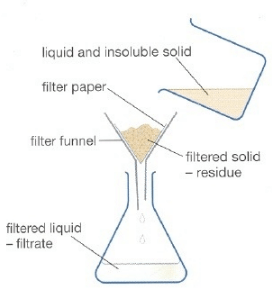 The nature of the precipitate and other factors dictate which filter medium must be used.
The nature of the precipitate and other factors dictate which filter medium must be used.
The most convenient ways of filtration are either through filter paper or through a filter crucible. it is widely used in industry and daily base uses for the separation of solids from a suspension or colloidal solution. the most advanced example of using filtration for blood during dialysis.
The common filters used for infiltration are often made with plastic, fabrics, or metal nets and also different types of papers.
There are three major types of filtration according to the nature of the mixture and size:
- Filtration
- Sieving
- Strained
Filtration through filter paper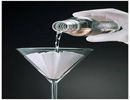
Filtration by a glass funnel and filter paper is usually a slow process. As the mixture is poured onto the filter paper, the solvent (water) passes through leaving behind the suspended particles on the filter paper. Filter papers are available in a variety of porosities (pore sizes). Which pore size is to be used, depends upon the size of particles in the precipitate.
The filter paper should be large enough so that it is one-fourth to one-half full of precipitate at the end of filtration. The funnel should, in turn, be large enough for its rim to extend 1 to 2 cm above the top circumference of the paper. If the process of filtration is to run smoothly, the stem of the funnel should remain continuously full of liquids as long as there is liquid in the conical portion.
The stem of the funnel should be several inches long so that it can extend a few centimeters down into the receiving beaker, and the tip should touch the side of the beaker. In this way, the filtrate runs down the side of the beaker without splashing. A complete filter paper assembly is shown in the figure below:
Folding of filter paper
The folding of filter paper is very important and the following points should be kept in mind. The paper should be folded twice. The first fold should be along the diameter of the paper. The second fold should be such that the edges do not quite match. The paper should be opened on a slightly larger section.
This provides a cone with a three-fold thickness halfway around and one thickness the other halfway around, and an apex angle very slightly greater than 60 degrees. The paper may then be inserted into a 60-degree funnel, moistened with water, and firmly pressed down. The filtering operation could be very time-consuming if it were not aided by a gentle suction as the liquid passes through the stem. This suction cannot develop unless the paper flits tightly all around its upper circumference.
Fluted filter paper
The rate of filtration through the conical funnel can be considerably increased using a fluted filter paper. For the preparation of such a paper ordinary filter paper is folded in such a way that a fan-like arrangement with alternate elevations and depressions at various folds is obtained.
Filtration through filter crucibles
Another convenient way to filter a precipitate is by suction through a crucible. Two types of crucibles are generally used.
Gooch crucible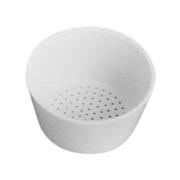
It is made of porcelain having a perforated bottom which is covered with paper pulp or a filter paper cut to its size. Quick filtration can be done by placing the gooch crucible in a suction filtrating apparatus.
It is useful for the filtration of the precipitate, which needs to be ignited at high temperatures. If its perforations are covered with asbestos mat then it may be used to filter solutions that react with paper e.g concentrated HCl and KMnO4 solutions.
Sintered glass crucible
Sintered glass crucible is a glass crucible with a porous glass disc sealed into the bottom. It is very convenient to use because no preparation is needed as with the gooch crucible.
15 Examples of Filtration in our daily life
in everyday life we can observe many examples of filtration such as Juice pouring, Oil filters, and the Preparation of coffee, etc.15 examples of filtration are as follows:
- Preparation of infusions
- Pasta cooking
- Air filters
- Preparation of coffee
- Juice pouring
- Water filters
- The filter for cigarettes
- Oil filters
- Sewer grates
- Stone pots or filters
- Pool nets
- Filter paper
- Sifting the flour
- Dialysis
- Sieving the cement
Watch the Video About The Topic…!

